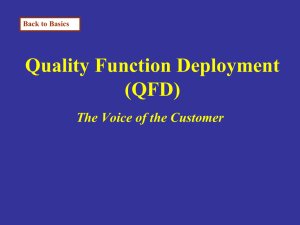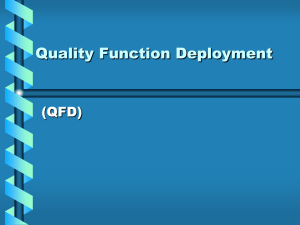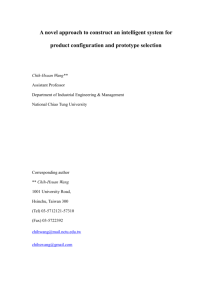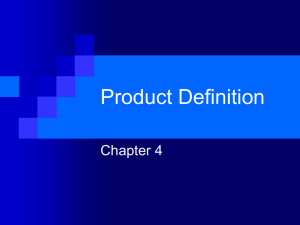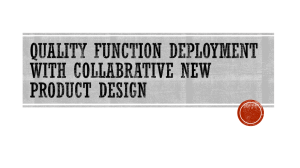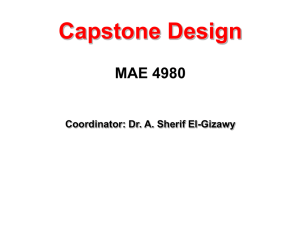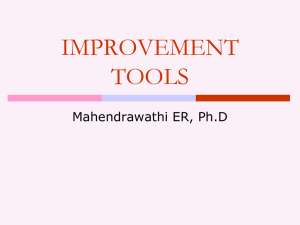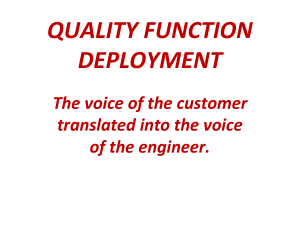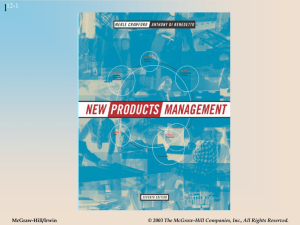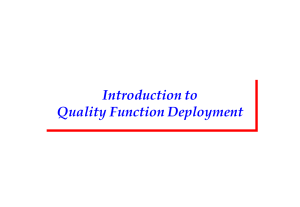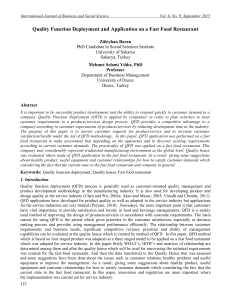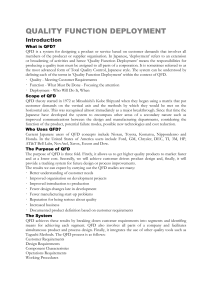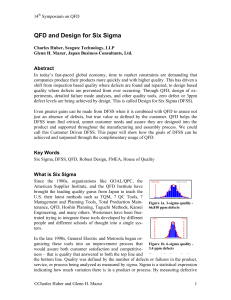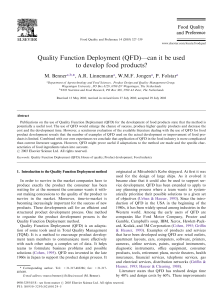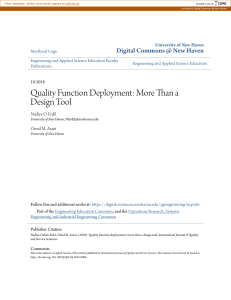Subject: ACS 560- Software Engineering Name: Ekaterina Schwartz
advertisement
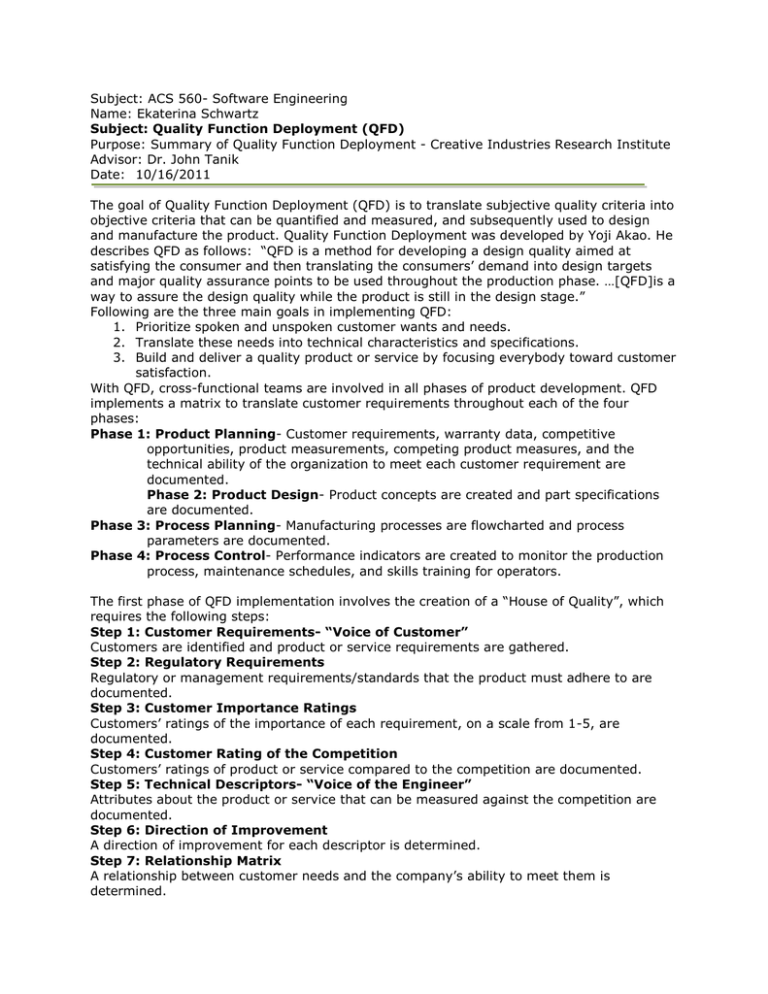
Subject: ACS 560- Software Engineering Name: Ekaterina Schwartz Subject: Quality Function Deployment (QFD) Purpose: Summary of Quality Function Deployment - Creative Industries Research Institute Advisor: Dr. John Tanik Date: 10/16/2011 The goal of Quality Function Deployment (QFD) is to translate subjective quality criteria into objective criteria that can be quantified and measured, and subsequently used to design and manufacture the product. Quality Function Deployment was developed by Yoji Akao. He describes QFD as follows: “QFD is a method for developing a design quality aimed at satisfying the consumer and then translating the consumers’ demand into design targets and major quality assurance points to be used throughout the production phase. …[QFD]is a way to assure the design quality while the product is still in the design stage.” Following are the three main goals in implementing QFD: 1. Prioritize spoken and unspoken customer wants and needs. 2. Translate these needs into technical characteristics and specifications. 3. Build and deliver a quality product or service by focusing everybody toward customer satisfaction. With QFD, cross-functional teams are involved in all phases of product development. QFD implements a matrix to translate customer requirements throughout each of the four phases: Phase 1: Product Planning- Customer requirements, warranty data, competitive opportunities, product measurements, competing product measures, and the technical ability of the organization to meet each customer requirement are documented. Phase 2: Product Design- Product concepts are created and part specifications are documented. Phase 3: Process Planning- Manufacturing processes are flowcharted and process parameters are documented. Phase 4: Process Control- Performance indicators are created to monitor the production process, maintenance schedules, and skills training for operators. The first phase of QFD implementation involves the creation of a “House of Quality”, which requires the following steps: Step 1: Customer Requirements- “Voice of Customer” Customers are identified and product or service requirements are gathered. Step 2: Regulatory Requirements Regulatory or management requirements/standards that the product must adhere to are documented. Step 3: Customer Importance Ratings Customers’ ratings of the importance of each requirement, on a scale from 1-5, are documented. Step 4: Customer Rating of the Competition Customers’ ratings of product or service compared to the competition are documented. Step 5: Technical Descriptors- “Voice of the Engineer” Attributes about the product or service that can be measured against the competition are documented. Step 6: Direction of Improvement A direction of improvement for each descriptor is determined. Step 7: Relationship Matrix A relationship between customer needs and the company’s ability to meet them is determined. Step 8: Organizational Difficulty Design attributes in terms of organizational difficulty (conflicting attributes) are rated (5=difficult, 1=easy). Step 9: Technical Analysis of Competitor Products Comparisons of competitor technical descriptors are conducted. Step 10: Target Values for Technical Descriptors Target values for technical descriptors are established. Step 11: Correlation Matrix How technical descriptors impact each other is determined (strong positive, medium positive, medium negative, strong negative). Step 12: Absolute Importance The absolute importance for each technical descriptor is determined.
